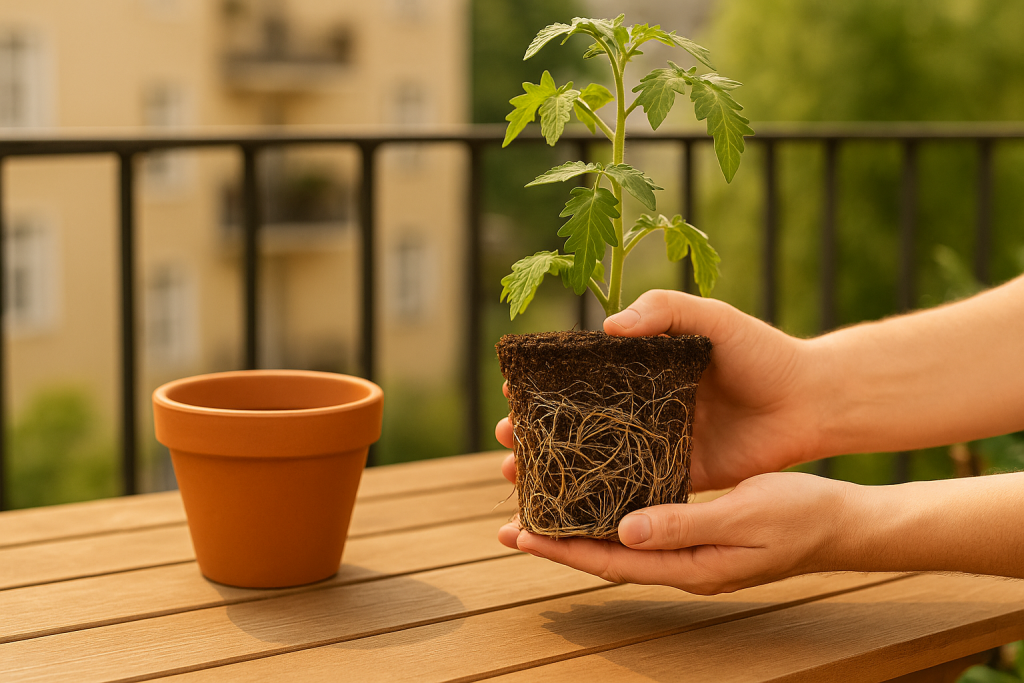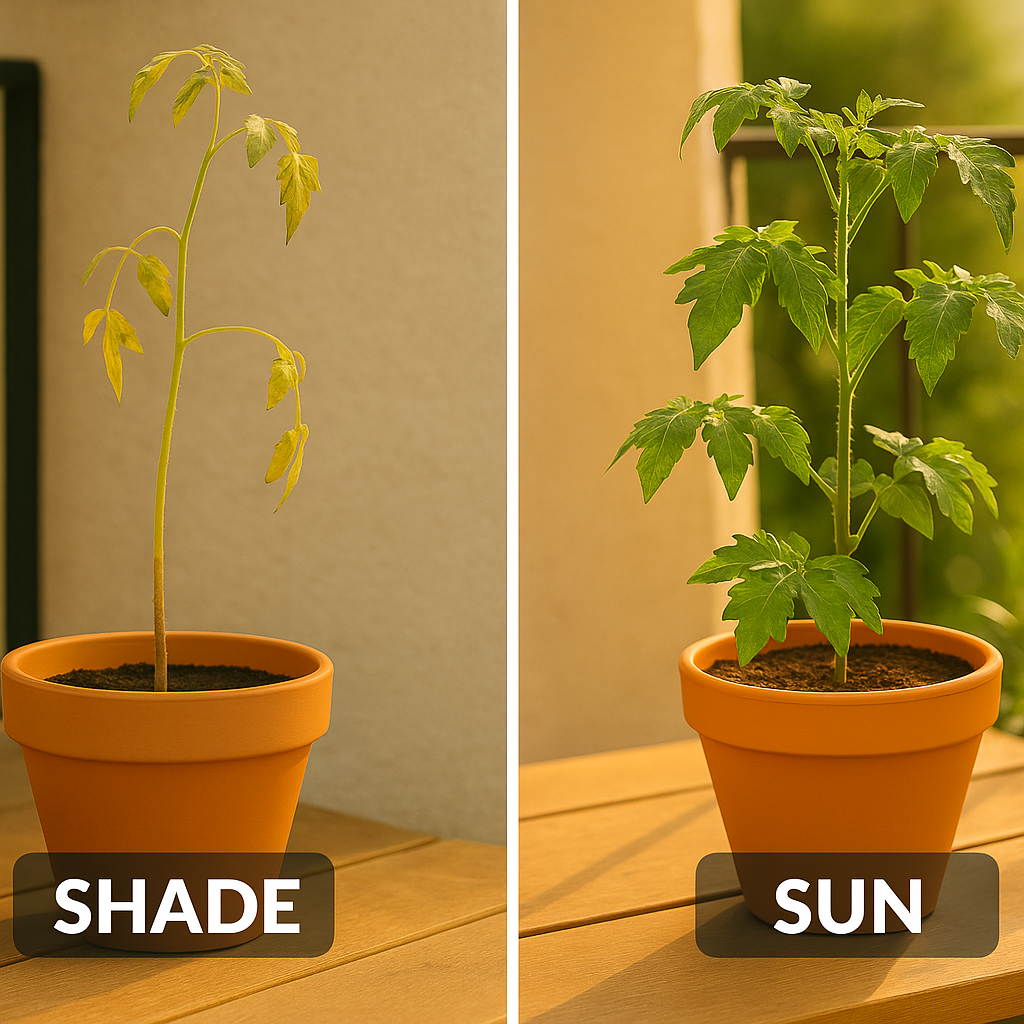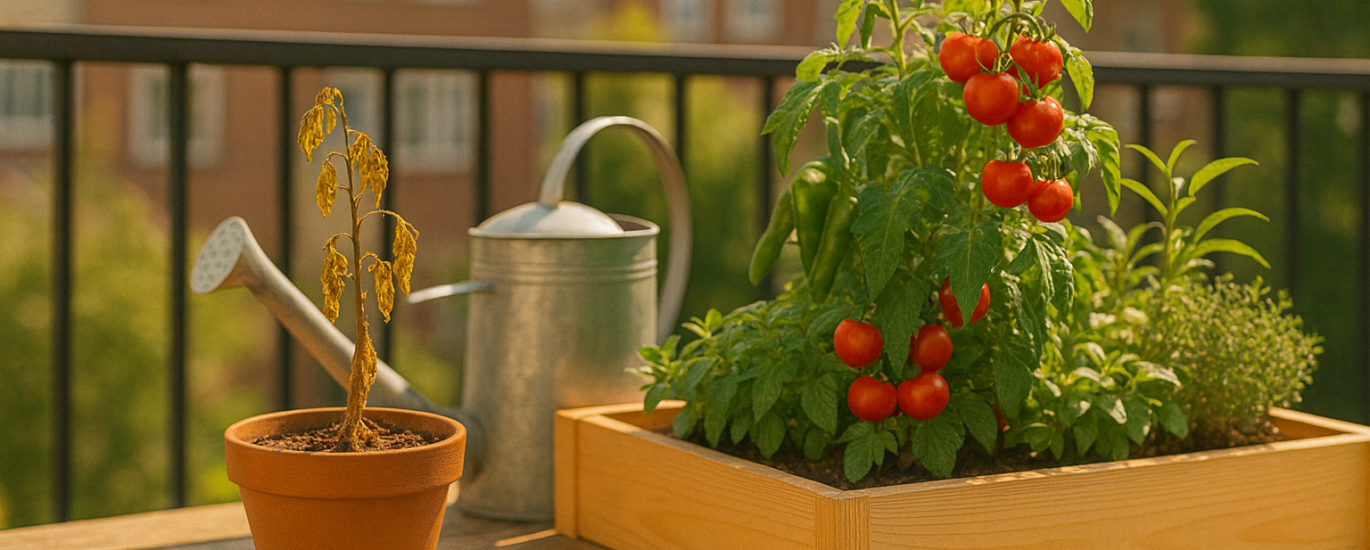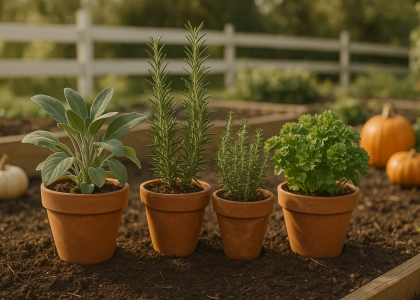Why Balcony Gardens Fail
Balcony gardens are perfect for city living — but many beginners face the same struggles. Plants wilt, leaves turn yellow, and harvests never arrive.
The good news? These fails are fixable, and your small-space garden can thrive with just a few adjustments. Remember: every gardener starts with a few fails — it’s how you grow.
Fail #1: Small Pots = Weak Roots
The Problem: Tiny plastic pots restrict root growth, leading to weak and stunted plants.

The Fix: Upgrade to larger containers or wooden raised beds. Roots spread freely, plants grow stronger, and you’ll see more flowers and fruit.
Fail #2: Overwatering = Root Rot
The Problem: Too much water causes soggy soil and suffocates roots. Signs include yellowing leaves and mushy stems.

The Fix: Check the top 1–2 inches of soil. If dry, water deeply. If still damp, wait. Use a watering can with a spout for better control.
Fail #3: Low Light = Leggy Plants
The Problem: Plants grown in dark corners stretch tall and weak, with pale leaves.

The Fix: Move containers to a sunnier spot. Most vegetables need 6+ hours of direct sunlight daily.
How to Fix Balcony Garden Fails
When you combine these fixes, your garden transforms:
- Bigger pots → healthier roots
- Smarter watering → no root rot
- More sunlight → stronger, greener plants

Regional Adaptation: Climate Matters
Not all balconies are created equal — your local climate plays a huge role in whether your plants thrive.
- Northern Europe / Cloudy Regions (e.g., Scandinavia, UK)
- Light is limited. Focus on shade-tolerant crops like leafy greens, herbs (parsley, mint), and strawberries.
- Use reflective surfaces (white walls, mirrors) to maximize available sunlight.
- Water less frequently because cooler, cloudy weather slows evaporation.
- Southern US / Mediterranean Regions
- Sun can be intense. Provide partial shade cloth to protect sensitive crops like lettuce or basil.
- Water more often — containers dry out quickly in hot, direct sunlight.
- Choose heat-tolerant varieties (cherry tomatoes, peppers, rosemary, thyme).
Pro Tip: Always adapt watering and light strategies to your local climate — what works in Texas may fail in Sweden!
Balcony Gardening FAQs
Can balcony plants grow in shade?
Yes — but choose wisely. Leafy greens (like lettuce, spinach, kale) and many herbs (parsley, mint, chives) tolerate partial shade and still produce well. Fruiting vegetables like tomatoes and peppers, however, need at least 6+ hours of direct sunlight for reliable harvests.
How often should I water balcony plants?
It depends on climate and container size.
- In hot, sunny regions, you may need to water daily, especially for small pots.
- In cooler, cloudy climates, watering 2–3 times per week may be enough.
Always check the top 1–2 inches of soil before watering.
What are the best vegetables for small balconies?
Great beginner-friendly crops include cherry tomatoes, peppers, lettuce, radishes, spinach, green onions, basil, parsley, and mint. They grow well in containers and don’t require massive root systems.
Final Tips for Thriving Balcony Gardens
- Prune regularly to keep plants bushy and productive.
- Use organic compost or fertilizer for steady growth.
- Harvest often — it encourages more blooms and fruit.
Expert References
To ensure accuracy, these tips align with guidance from:
- Royal Horticultural Society (RHS, UK) – container gardening & small space growing
- University Extension Programs (e.g., Master Gardener Program, USA) – best practices for watering, light, and soil management
- American Horticultural Society (AHS) – climate-based plant recommendations
Call to Action
Turn balcony fails into harvest wins!
Comment “GROW” below if you’re ready to fix your balcony garden.
Follow Greenmuse for more one-minute garden hacks and printable guides.
Explore more at 👉 Greenmuse.io





